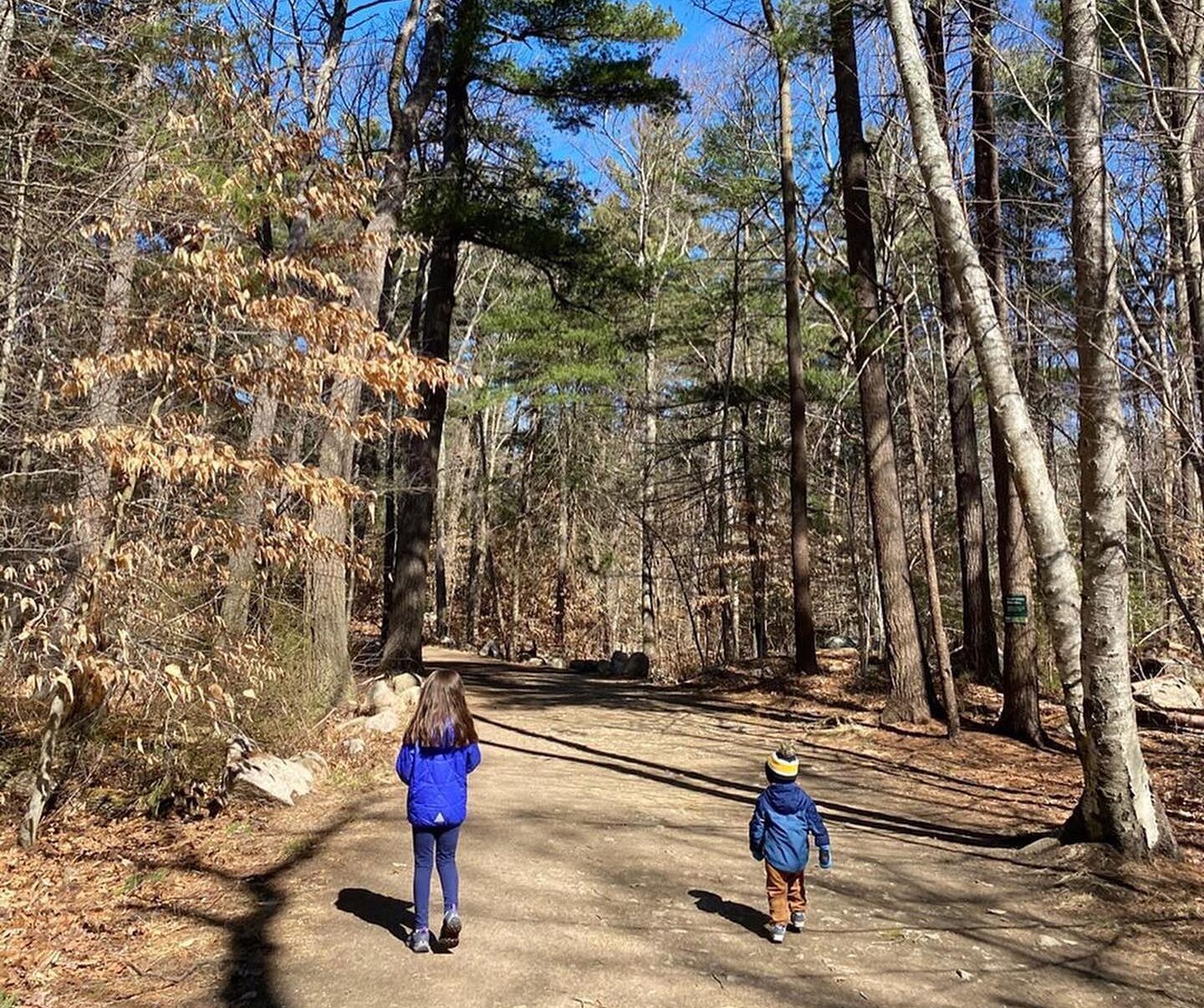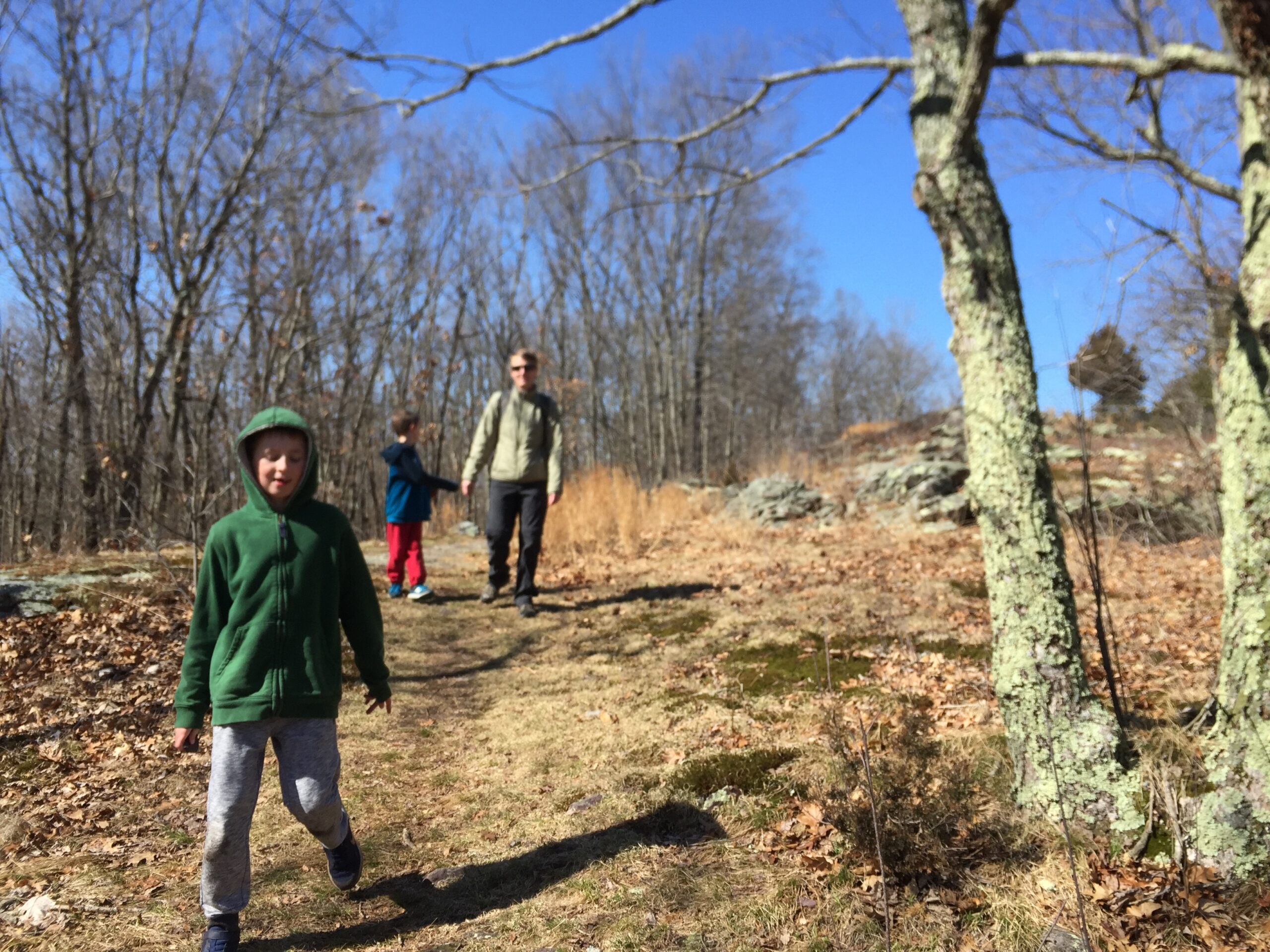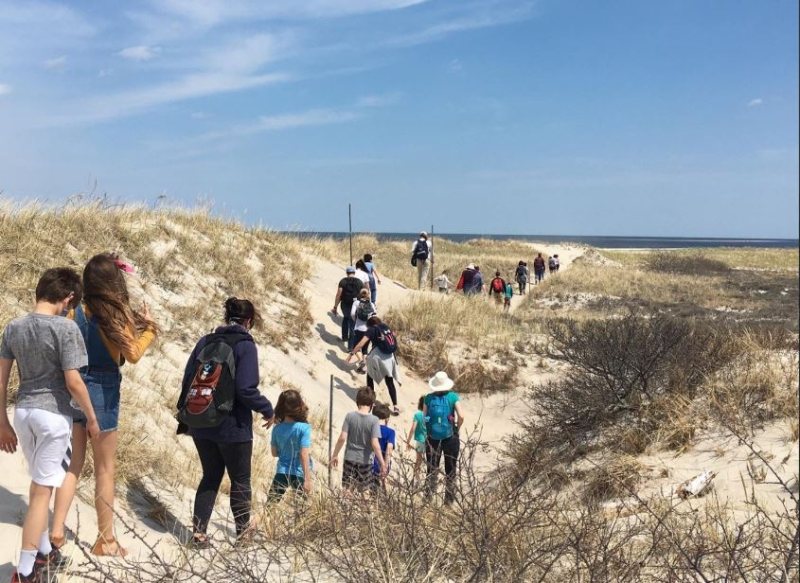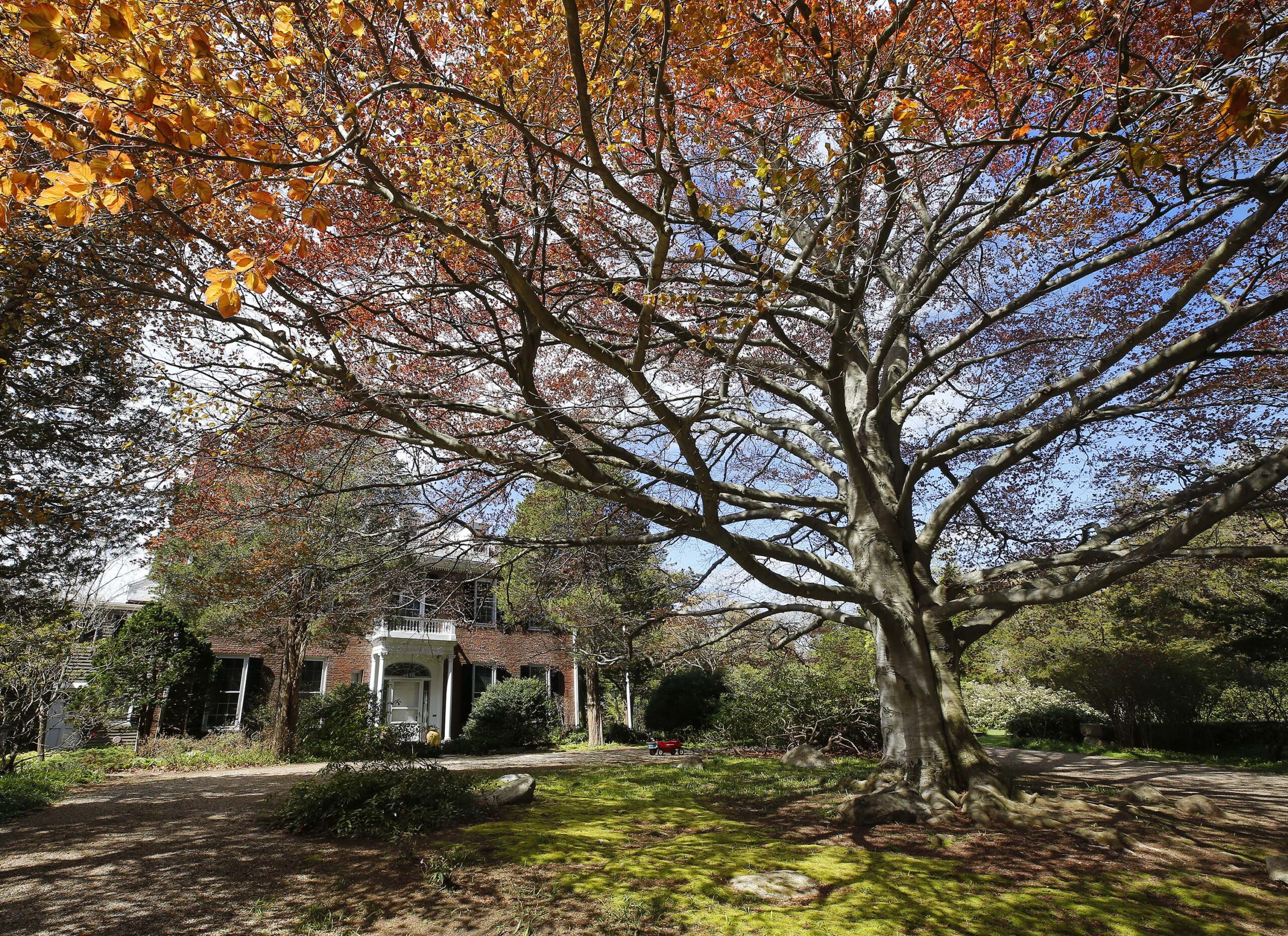
As spring approaches and the weather warms, it becomes easier to think about taking kids out for a “big explore” at a natural space near you, or even one of The Trustees’ trails.
One of my favorite Winnie-the-Pooh quotes is, “When you see someone putting on his Big Boots, you can be pretty sure that an Adventure is going to happen.” (A.A. Milne). When my girls were young, we used this quote to get them excited about getting out and about and exploring nature. The best thing about hiking with young children is that they are naturally curious about their world, and they will mirror your excitement.
I often hear people who are new to hiking, or parenting, ask how to hike with children. It can be intimidating if you did not grow up exploring the woods or are still trying to figure out how to manage the logistics of getting children out of the house for a big outing. Here are some tips I have learned along the way
Plan – but not too much!
Whether you are an experienced hiker the loves charging to the tops of mountains or a newbie who just started to get comfortable in the woods, make sure you have realistic expectations.
When your children are small enough, you can use a child carrier and just hike to your own limits. If you are exploring with toddlers and younger children, be prepared to stop at every exciting discovery on the trail – it might take an hour to go half a mile! You will be amazed at what young kids find on the trail! Older or more adventurous children can understand getting to a particular endpoint, a scenic peak, a spot on a lake, etc. This will help keep them focused.
Know your child
- If your child is not used to physical activity, start small and work up to longer, steeper trails.
- Never be afraid to turn back if your child (or you!) feels that the hike is too ambitious.
- Pushing limits can be a good lesson, but in the woods, it’s critical to know when the goal is just not going to work.
- Morning hikes are good – kids have abundant energy to burn, and a morning spent hiking will increase your odds of a solid afternoon nap!
Distractions!
Even the most adventurous child will need encouragement at some point.
- Make a game of seeing what is “just up ahead”
- Take frequent breaks for water and snacks
- Encourage them to make fascinating discoveries on the trail.
Pro tip: Use their current interests to keep them moving. When my girls were preschool age, they loved the movie Peter Pan – we spent many hikes looking for Peter’s secret hideout tree!
The Big Explore!
This leads me to the best part of hiking with kids – letting them explore the world!
The natural world is full of fantastic, amazing, and sometimes messy discoveries.
- A feather on the trail starts a discussion of who left it there
- A hollow in a tree is a fairy’s house
- Animal tracks show us who calls the woods home.
- The most frequent mystery item seen is poop (or the proper word – “scat”)! As kids are naturally inclined to find anything poop-related funny, use a nature guide to discover who left their mark on the trail.
Pro tip: Looking up details about the animals around them can make a child forget about being tired.
If your child loves to keep their hands busy:
- Bring a small notebook with some crayons or colored pencils so they can document their discoveries.
- A child-safe magnifying glass will let them (and you) see some pretty cool things on the trail.
Pro tip: There are many nature guides geared toward children. I found regular field guides can also work with children as they give more information on habitat and other details they will want to know as they get older.

Safety
Using basic animal safety skills will keep you and your children safe.
- No matter how cute or tame a wild animal looks, do not touch them or feed them.
- Even that cute little chipmunk can inflict a nasty bite!
- Feeding wildlife encourages them to approach humans, which can cause problems for both parties.
- Attempting to handle even small animals can cause them added stress to their already stressful life.
A word about baby animals: Seeing a baby animal alone in the woods can make us feel like we need to “rescue” it – resist that parental instinct! Young animals know to stay put and wait for mom to come back to them, and momma may be watching you while you watch her baby.
Worrying about your child getting lost in the woods is another concern parents can have. The same safety lessons you teach your children for walks around town apply to the woods. Keeping track of them in the woods can be made easier by teaching and practicing some simple skills.
- Find an easy command like Stop! or Red Light! (We used the word “freeze” to tell our girls they needed to stop right away.)
- We also made a game of practicing what to do if they feel lost – “sit down, blow your whistle and stay put!”
Pro tip: A whistle on a lanyard can be used if they feel lost.
If your children are older and want to lead the hike:
- Have them stop at each trail junction or guidepost.
- Make sure they have a map and understand how to use it.
- The same instructions to stay put if they feel lost apply to older children.
Getting our children comfortable in nature is a great skill to give them. There are a lot of lessons taught while exploring – reaching a plan, adjusting your goal, taking care of the environment, and how we as humans fit into the natural world. Teaching children to take one last look after a break to make sure all trash is picked up teaches them stewardship, waiting for a slower hiker in the group teaches them to be aware of others, and allowing a change of plans to explore an unexpected discovery teaches them flexibility.
The Trustees offer many opportunities to get out and explore with children of all ages and abilities, including guided hikes, day camps, and family events.



